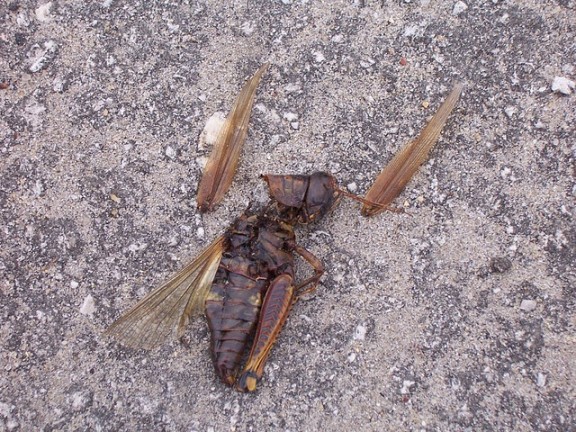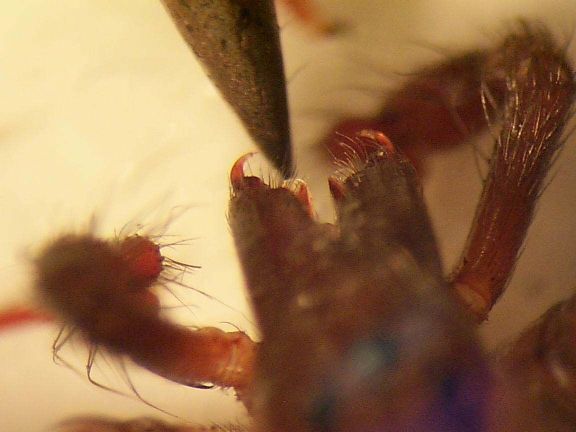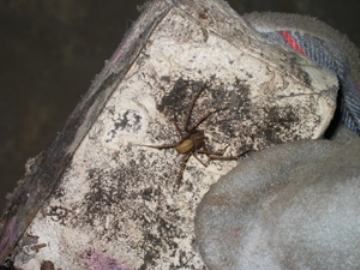Nutrition
The brown recluse has very interesting methods of acquiring its nutrition. These spiders always search for their food during the night hours. They will most often bite an organism and then leave it to die only to come back and recover it later. Brown recluses are also known to be scavengers. They will eat organisms that have been dead for some time, or they might steal the prey of fellow brown recluse spiders. There is also the chance that a poor, unsuspecting creature will wander into a brown recluse nest, become entangled, and suffer a bite and injection from the "homeowner." This spider does not prefer to store its food, but it instead elects to either eat it right away or leave it out in the open. Although this presents the risk of the prey item possibly being stolen by another organism, the brown recluse seems to be satisfied with its odds.

http://www.flickr.com/photos/lkbm/52585071/
License Information:
http://creativecommons.org/licenses/by/2.0/deed.en
Like most animals, brown recluses have a circulatory system to move the nutrients they receive from their food throughout their body. Specifically, they have an open circulatory system. This means blood (hemolymph) within this organism is not always confined to blood vessels and can at times be contained within certain body cavities.
 http://www.brown-recluse.com/spiderinfo.html
http://www.brown-recluse.com/spiderinfo.html
Brown recluses are not picky when it comes to choosing their food. Their prey usually ranges from any small insects they can get to other spiders. Some of these insects include the mayfly and grasshoppers. Their long, slim legs allow them to chase down just about anything they desire to eat. When it comes to obtaining food, the brown recluse is not like most spiders. They prefer to go out and get their prey the hard way rather than waiting for it to get caught in a web.

http://www.ca.uky.edu/entomology/entfacts/ef631.asp
Are you curious as to how the brown recluse has adapted to become the amazing predator is? Check it out here!